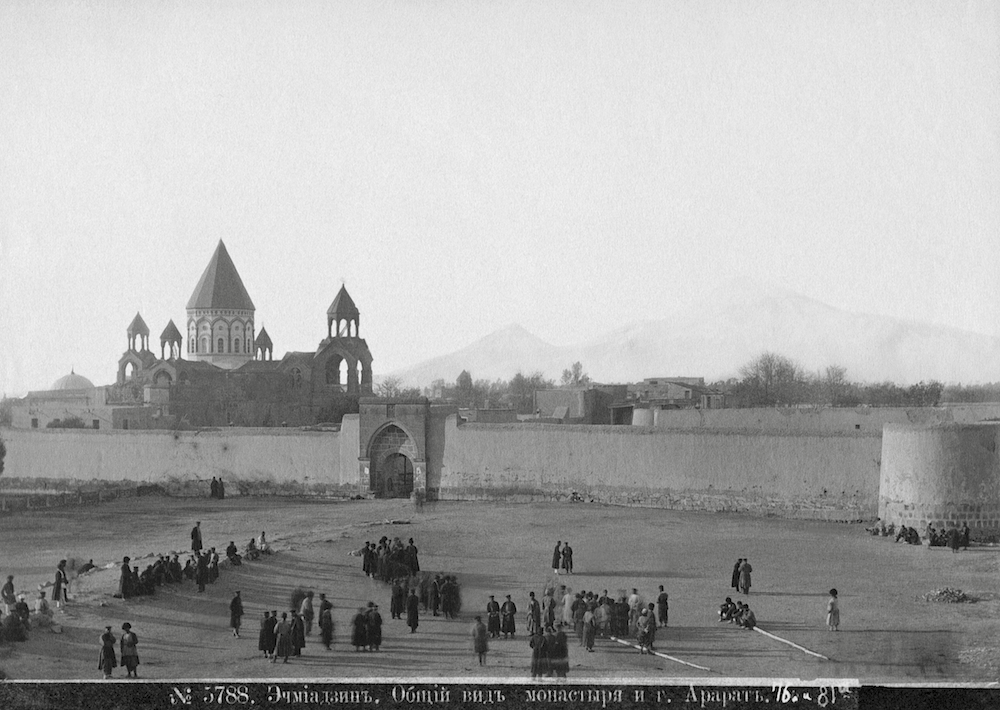
Three Colours—Green, Red, Blue: Armenia and Georgia, from the Industrial Revolution to Soviet Occupation
Curated by Nestan Nijaradze
The exhibition Three Colours—Green, Red, Blue: Armenia and Georgia, from the Industrial Revolution to Soviet Occupation features photographs from Armenia and Georgia and covers the period from the second half of the 19th century to their occupation by the Soviet Union.
The photographs included in this exhibition are just a fraction of a rich and extensive photographic heritage, one that offers a visual history of the region and gives an insight into this important period seen through the revolutionary medium of photography.
Three Colours—Green, Red, Blue: Armenia and Georgia, from the Industrial Revolution to Soviet Occupation is part of the bigger exhibition that was held in the Tbilisi Photography & Multimedia Museum in 2022.
The three colours mentioned in the title of the exhibition —green, red and blue—refer to the innovative method of photography used by Sergei Prokudin-Gorskii, a renowned Russian photographer and chemist. During the industrial development of the South Caucasus, long before the invention of colour photography in the early 20th century, Prokudin-Gorskii devised a revolutionary technique to create colour photographs from black and white images, a method that he subsequently employed in Georgia in 1905 and 1912.
The history of photography’s development in Armenia and Georgia is not only noteworthy given the region’s openness to, awareness of and receptiveness of European innovations, but more significantly, it represents a treasure trove of some of the most valuable visual evidence of the history of the growth and transformation of Armenia and Georgia. Yet despite the richness and significance of this photographic heritage, it remains relatively unknown both within the region and to the wider public.
The exhibition focuses on the period from the 1850s to the 1920s for two reasons. Firstly, from the 1860s onwards, the industrial development of the South Caucasus gained momentum, leading to significant economic, social, cultural and political changes. Secondly, this period witnessed the widespread use and development of photography, a new European invention, in Armenia and Georgia. As was the case in other European countries, momentous historical events in the South Caucasus, on the periphery of the Russian Empire, were documented using the most contemporary and innovative medium of the time: photography. This photographic heritage therefore offers us a unique window into the history of two countries during this period.
The industrial development of the South Caucasus during this period brought forth numerous challenges and prospects. How did photography, as a cultural and scientific innovation, capture these new realities? This exhibition aims to explore these questions and delve into the photographic heritage of the region.
From the 1860s onwards, the South Caucasus experienced rapid industrial development. Commercial ports on the Black Sea coast such as Batumi and Poti experienced significant growth. The port also became a crucial hub for shipping manganese ore mined in Chiatura (Georgia) to various European destinations. 93% of manganese destined for export was shipped from Poti between 1886 and 1901.
Railways connected Yerevan and Alexandropol (modern-day Gyumri) by 1899, and later Yerevan and Julfa by 1905. The discovery and active mining of iron ore in Armenia led to the emergence of industrial metallurgy in the country.
These rapid industrial developments triggered social changes, including the formation of bourgeoisie and working classes, further accentuating existing social divisions. The region also attracted numerous foreign travellers, merchants, writers, diplomats and military attachés, leading to the establishment of new consulates, modern hotels and restaurants. New residential districts popped up, and the pace of life quickened considerably. A number of well-known merchants and businessmen, such as Nobel, Siemens, Mantashev and others, brought their businesses to the South Caucasus. The region was undergoing rapid change, and was bubbling with commercial activity and brimming with dynamism. Urban spaces and daily life underwent significant transformations.
Shortly after the official announcement of photography’s invention in Paris in 1839, this European novelty reached the South Caucasus. By the 1850s and 1860s, this new medium became widely popular in the region. As in Europe’s major industrial countries, photography in the South Caucasus focused on documenting fast-paced industrial developments and their impacts, and the leading photographers of the time documented the region during this crucial period.
The unfolding industrial revolution contributed to the region’s closer co-operation with its European partners and created new opportunities for political, cultural and economic developments.
The political and economic situation in the South Caucasus changed dramatically following the Russian invasion and annexation of Armenia in 1920 and of Georgia in 1921. Reflecting on the photographs from this period raises the question: if not for the Russian invasion and the establishment of Soviet rule, how would the region have developed along the path of industrial revolution?
The exhibition Three Colours—Green, Red, Blue is a first attempt to revisit and reconsider this important period through the lens of its rich photographic heritage.
The photographs of Armenia and Georgia that are included in this exhibition were sourced from the collections of the U.S. Library of Congress and the Georgian National Archives. The collections of S. Prokudin-Gorskii and Melikian were obtained from the Library of Congress, whereas some of Dimitri Ermakov’s collection was sourced from the Georgian National Archives. It is worth noting that the materials mentioned above are only a small part of the existing collections held both in the U.S. and Georgia.
This project was funded by the U.S. Embassy to Georgia in order to mark the 30th anniversary of Georgian-American diplomatic relations, which was celebrated in 2022.
